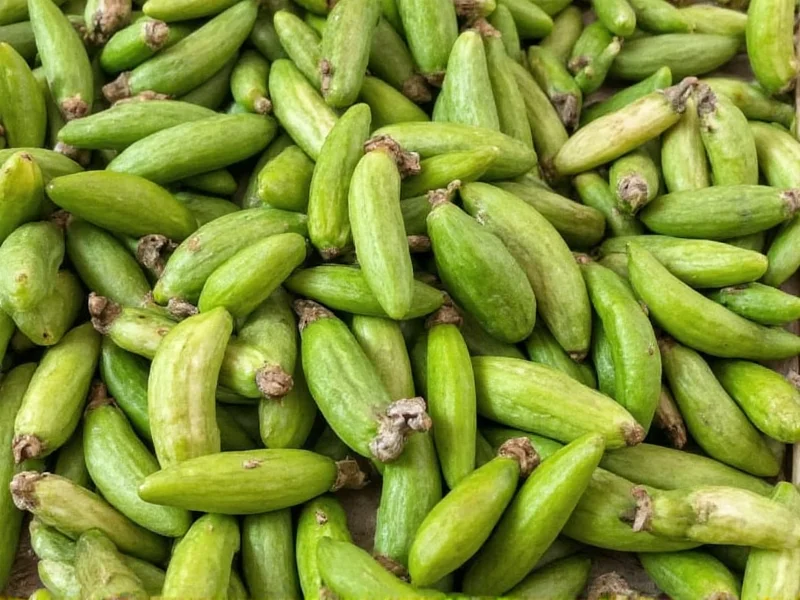Cardamom pods represent one of the oldest and most prized spices in global culinary traditions. These small but mighty capsules come from perennial plants in the ginger family (Zingiberaceae) that thrive in tropical climates. When you ask what is a cardamom pod, you're exploring a spice with a history spanning thousands of years across Middle Eastern, Indian, and Scandinavian cuisines.
Understanding Cardamom Pod Structure and Appearance
Each cardamom pod consists of a thin outer shell protecting numerous tiny black seeds. The pods grow in clusters on the cardamom plant, resembling miniature pinecones before harvesting. When fresh, green cardamom pods display a light green color with a smooth, slightly waxy texture. As they dry, they may darken to olive green. Black cardamom pods appear larger and darker with a rougher exterior.
The seeds inside provide the characteristic flavor, while the pod itself contributes additional aromatic compounds. Many cooks make the mistake of discarding the pod when it actually contains valuable flavor elements. Professional chefs often lightly crush the entire pod to release maximum flavor before adding it to dishes.
| Characteristic | Green Cardamom Pods | Black Cardamom Pods |
|---|---|---|
| Botanical Name | Elettaria cardamomum | Amomum subulatum |
| Size | 1-2 cm long | 2-3 cm long |
| Color | Light to olive green | Dark brown to black |
| Flavor Profile | Citrusy, floral, herbal | Smoky, camphorous, earthy |
| Primary Growing Regions | India, Guatemala, Tanzania | Nepal, Bhutan, China |
Green vs Black Cardamom Pods: Key Differences
When exploring what does a cardamom pod look like, you'll encounter two main varieties with distinct characteristics. Green cardamom pods come from Elettaria cardamomum and represent the more common variety found worldwide. These delicate pods offer bright, citrus-forward notes that work beautifully in both sweet and savory applications.
Black cardamom pods originate from different plant species (primarily Amomum subulatum) and undergo a smoking process during drying. This gives them a dramatically different flavor profile with pronounced smoky, menthol-like notes. While green cardamom enhances delicate dishes like rice pudding and Scandinavian pastries, black cardamom shines in robust preparations like Indian curries and Chinese braises.
How to Use Cardamom Pods in Cooking
Understanding how to use cardamom pods in cooking unlocks their full potential. For maximum flavor extraction, lightly crush the pods with the back of a knife before adding them to dishes. This releases the aromatic oils while keeping the seeds contained. In Indian cuisine, cooks often add whole pods to rice dishes like biryani, removing them before serving.
For baking applications, many chefs remove the seeds from the pods and grind them fresh. This provides the most intense flavor for items like Swedish cardamom buns or Middle Eastern coffee cakes. When making cardamom coffee or tea, simply crack the pods and steep them directly in the hot liquid.
Proper storage maintains freshness—keep cardamom pods in an airtight container away from light and heat. Whole pods retain their flavor significantly longer than pre-ground cardamom, which loses potency within weeks. For best results, use within 6-12 months of purchase.
Culinary Applications Across Global Cuisines
The versatility of cardamom pods explains their enduring popularity. In Scandinavian baking, green cardamom pods flavor traditional breads and pastries. Indian kitchens use both green and black varieties extensively—green in desserts and rice dishes, black in savory meat preparations. Middle Eastern cultures incorporate cardamom into coffee blends and rice pilafs, while Southeast Asian cuisines feature it in curry pastes and soups.
When considering what is cardamom pod used for, note that different cultures employ distinct techniques. Some prefer to use the entire pod, others extract just the seeds, and some even use the husks for tea. This adaptability makes cardamom one of the most universally appreciated spices worldwide.
Nutritional Profile and Storage Tips
Cardamom pods contain essential oils like cineole and limonene, along with antioxidants and trace minerals. While not consumed in large quantities, they contribute beneficial compounds to your diet. The pods themselves contain fiber and additional phytochemicals beyond what's found in the seeds alone.
For optimal storage, keep cardamom pods in an opaque glass container in a cool, dark place. Avoid refrigeration as moisture degrades quality. Whole pods maintain freshness for 12-18 months, while ground cardamom loses potency within 3-6 months. Freeze pods only if necessary, as condensation upon thawing damages quality.
Common Substitutes and Quality Indicators
When you can't find cardamom pods, several alternatives work in a pinch. A blend of equal parts ground cinnamon, nutmeg, and cloves approximates the flavor profile. For green cardamom specifically, a combination of ground coriander and ginger with a pinch of allspice offers reasonable substitution.
To identify high-quality cardamom pods, look for plump, intact capsules with a strong aroma when lightly crushed. Avoid pods that feel lightweight (indicating dried-out seeds) or show signs of mold. The best pods snap crisply when bent, releasing a burst of fragrance. Fresh cardamom should never taste musty or stale.











 浙公网安备
33010002000092号
浙公网安备
33010002000092号 浙B2-20120091-4
浙B2-20120091-4